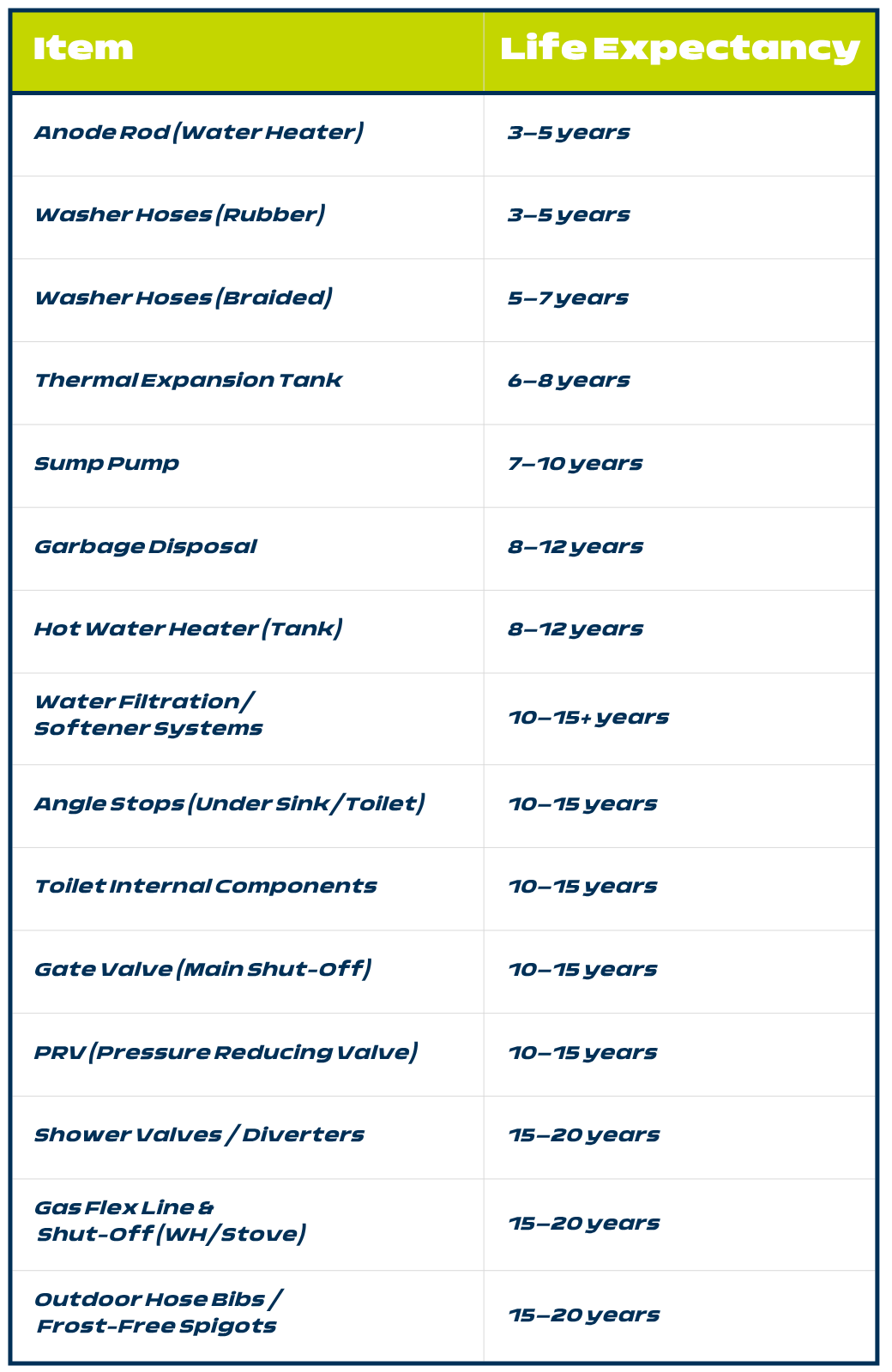Introduction
When it comes to your home’s plumbing, out of sight shouldn’t mean out of mind. Many components in your plumbing system wear down over time, even if everything seems to be working just fine on the surface. Staying ahead of potential issues means knowing when to expect wear and tear and planning timely replacements to avoid costly damage or emergency repairs.
Below is a breakdown of common plumbing components and how long they typically last. Consider this your cheat sheet for proactive home maintenance!
Plumbing Components & Their Life Expectancy Chart

Why This Matters?
Ignoring aging plumbing parts can lead to hidden leaks, water damage, and efficiency issues. For example:
- A worn anode rod can lead to tank corrosion and early water heater failure.
- Rubber washer hoses are a common source of sudden laundry room floods.
- A failing PRV (Pressure Reducing Valve) can cause strain on your pipes and fixtures.
Replacing these parts on schedule can prevent costly surprises—and help you sleep a little easier.
Pro Tips
- Inspect annually: Even if you’re not replacing parts yet, checking for signs of wear (rust, leaks, corrosion) can catch small problems before they grow.
- Opt for upgrades: When replacing hoses, choose braided stainless steel over rubber. When replacing shut-off valves, ball valves tend to be more reliable than gate valves.
- Keep records: Note install or replacement dates, so you don’t have to guess down the road.
Need Help?
If you’re unsure about the age or condition of your plumbing parts, one of Eco’s licensed plumbers can perform a full inspection and help you make a game plan for maintenance or upgrades












